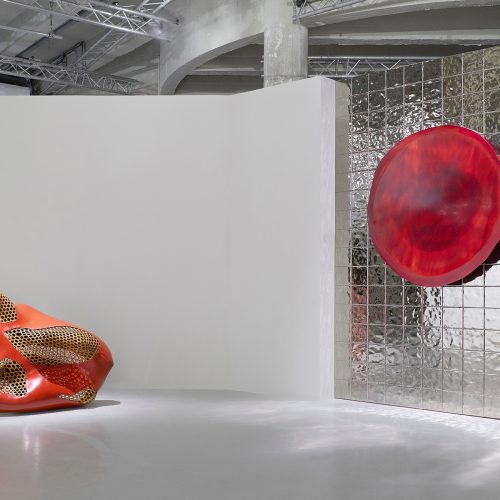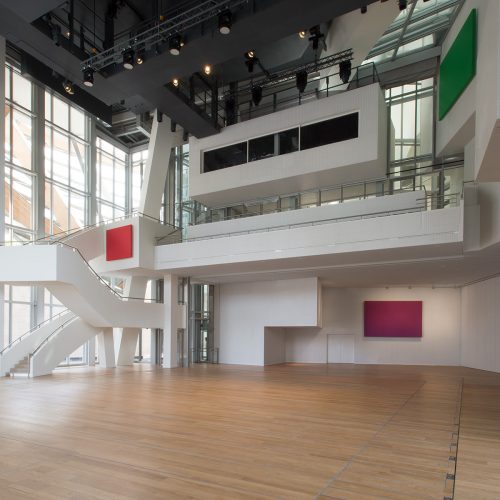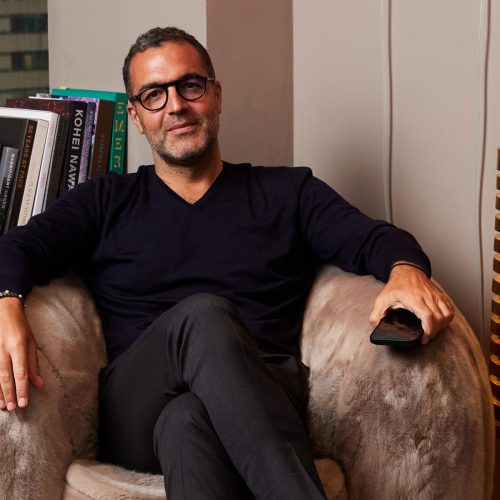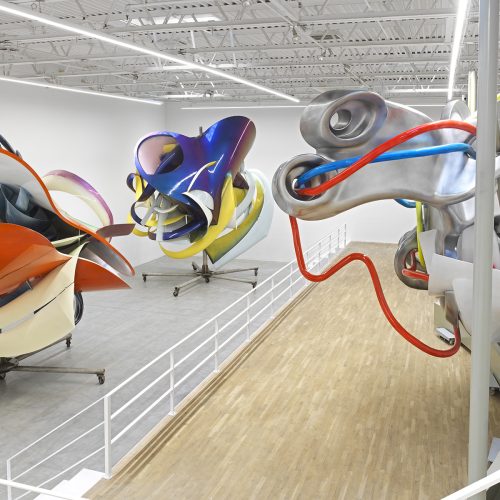

Antoni Gaudí’s Casa Batlló Building Transformed by Fantastical Digital Art Projections
Argentinian artist Sofia Crespo’s hypnotizing projection of flora and fauna drew almost a hundred thousand viewers to the Barcelona landmark, a UNESCO World Heritage Site
Around 50,000 people gathered in front of Barcelona’s Casa Batlló last Saturday night. Despite the chilly Mediterranean winter, the crowd stood in awe in front of the Antoni Gaudí-designed building on Passeig de Gràcia as fantastical moving images of sea life, organisms, earth, flora, and fauna blanketed the 147-year old UNESCO World Heritage Site. Abstract washes of fluid forms in bright colors with an ecological familiarity danced across its balconies, windows, and ornamentations. A similar amount of viewers appeared the following night, culminating in Sofia Crespo’s mainly AI-generated mapping art project Structures of Building in the Catalan capital. The two-night event was commissioned by Casa Batlló to activate the historic building’s facade with the Argentinian artist’s meticulously-crafted video that fit the six-story edifice like a glove. The laser-sharp projection was accompanied by Robert M. Thomas’s algorithm-generated composition, played by an orchestra that included Sagrada Familia’s in-house organist Juan de la Rubia.

Barcelona’s Casa Batlló installation. Photo: Claudia Maurino

Barcelona’s Casa Batlló installation. Photo: Claudia Maurino
Crespo told Galerie that putting her temporary mark on such an iconic building is “an act of surrender,” which required being aware of the unexpected and different types of responses. The heightened emotions in the air and even a few teary eyes among the crowd, however, proved the artist and the Casa Batlló executive director Gary Gautier the power in blending history with the moment. The meticulous process of seamlessly blending snippets of various living beings into a 4,305 square-foot scale endeavor came out of a collaboration with the local technology lab Barcelona Supercomputing Center which provided data on the behavior of marine currents. Behind the highly-engineered technology, the ten-minute long projection was a multi-sensorysymphony that dressed Gaudí’s masterpiece with a veil of ecological life. “A sexy magic,” as Gautier expressed to Galerie, the mapping technology allowed the already-flamboyant outer face of the building with mammoth jelly fishes floating in an aquatic weightlessness and sharply-hued flowers blossoming across the balconies that the architecture master designed like Venetian masks. Gaudí’s whimsical design in fact provided Crespo an unparalleled blank canvas to convey dramatic layers and crevices, elevating the three dimensional effect to a hypnotic texture.
“If you map a flat building with rectangular balconies, the imagery you will get is limited,” added Gautier. Besides its piercing balconies, the building is dressed with ornate columns, floral accents, and a roof that resembles fish scales—in addition to stone and iron, ceramic and glass accents are spread around

Barcelona’s Casa Batlló installation. Photo: Claudia Maurino
For the artist, the “non-invasiveness” of the mapping technique was a major attraction. “I love that I could touch the building without really touching it,” she said. Given the building is a beloved cultural institution and a city landmark, covering its world-famous details with her visuals was a gesture Crespo had to carefully elaborate on. “There is already so much motion in Gaudí’s lines,” she added, “even with the curves on the roof that give the building a feeling of melting.” This interplay between the building’s static-yet-energetic nature and her fluctuating visuals crescendoed with sequences of fungi gushing out of the earth and flowers blossoming in full color palette through the work’s finale.

Barcelona’s Casa Batlló installation. Photo: Claudia Maurino
The project marked Casa Batlló’s sophomore mapping art project after last year’s Refik Anadol commission, titled Living Architecture. An NFT version of Anadol’s work was later auctioned at Christie’s for $1.38 million. Crespo’s journey into orchestrating a multi-sensory symphony for Casa Batlló began last October with a trip to Barcelona. Site visits across different Gaudímasterpieces, such as Park Güell, ended with his tour-de-force Sagrada Familia which helped the artist better grasp the architect’s norm-pushing vision. The transformative aspects of the two buildings inspired her to create a similarly generative work. “Casa Batlló, just the way Sagrada Familia is still under construction, is constantly going through renovation and restoration—almost in a constant motion,” she said. “They are still recovering Gaudí’s traces on the third floor, for example.” Conducting such a fluctuating sensory experience partially came out of the accompanying sonic composition which was recoded at the World Heritage Site concert hallPalau de la Música Catalana. “Working with de la Rubia who is so familiar with the acoustics of Gaudí’s buildings added another depth to the experience,” added the artist.

Barcelona’s Casa Batlló installation. Photo: Claudia Maurino
“When Gaudí created Casa Batlló, people were not stopping in front of the building to appreciate its beauty,” said Gautier. “It took years for the public and the architects to understand the biomimetics behind his vision.” Over a century later, Crespo found a whimsical medley of contradictions in Gaudí’s work: “he built together what we see in life as as separate constructs.” And, she found inspiration in his whimsical approach to “life and death as well as other natural cycles for us humans and other living beings.”






